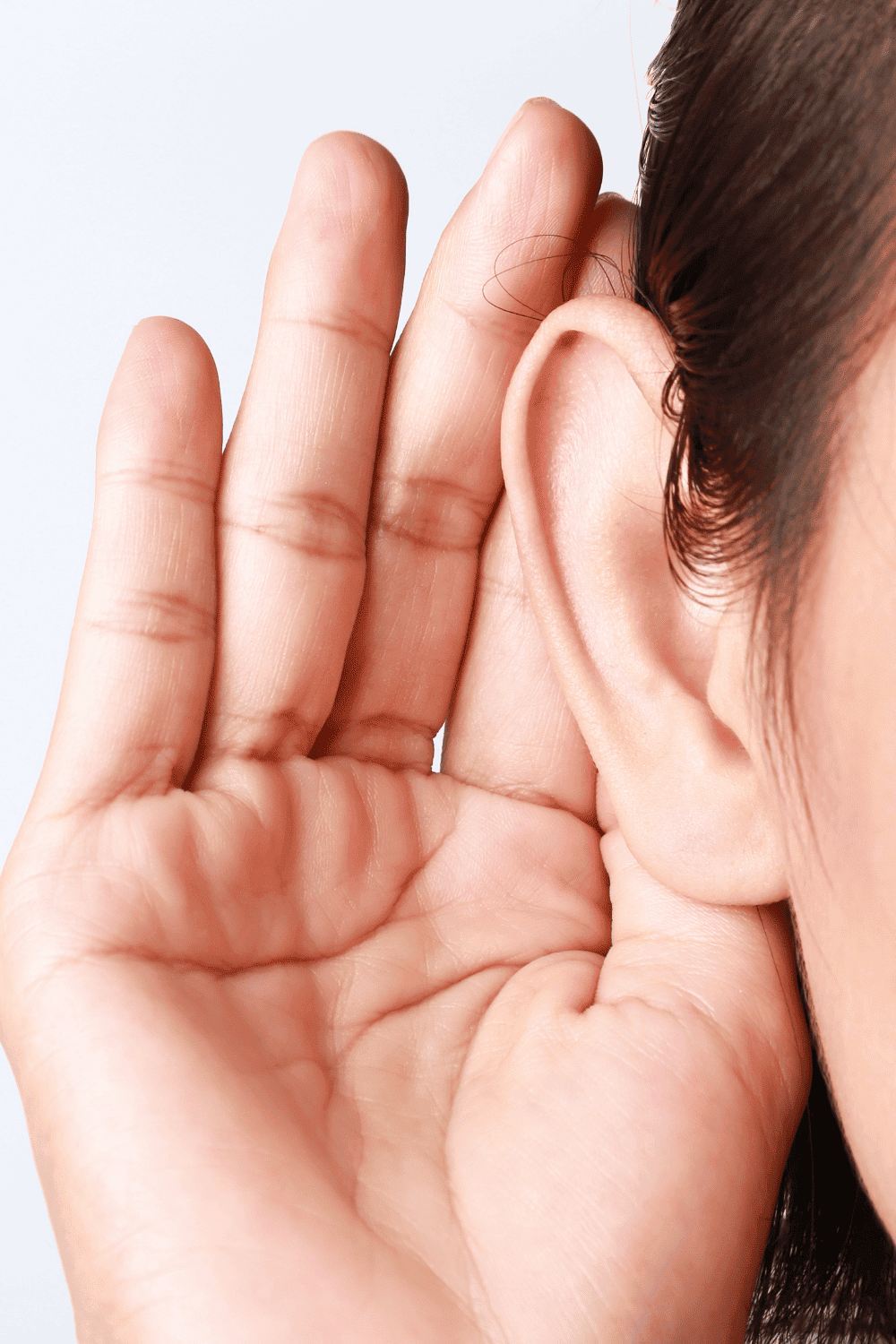How to Use Active Listening and Paraphrasing to Strengthen All Your Relationships
Ever felt like you're talking to a brick wall? You're not alone.
Genuine communication often feels like a lost art, even though some may think that through social media and technology, we’re more connected than ever.
But here's a secret: the key to better relationships isn't in what you say, it's in how you listen.
Active listening is a superpower that can transform your interactions, both personal and professional. It's about hearing words, yes, but also about creating understanding and fostering empathy. It is possible to strengthen every relationship in your life, from your partner through couples therapy to your colleagues through starting therapy in general.
Let's explore how mastering the art of active listening and paraphrasing can revolutionize the way you connect with others.
Looking to start couples or individual therapy now? We offer free consultations so you can ask questions and learn about our approach before committing.
What is Active Listening and Paraphrasing?
Active listening and paraphrasing is a powerful communication technique that involves fully concentrating, understanding, responding, and then restating what is being said in your own words.
Unlike passive hearing, which simply involves perceiving sounds, active listening and paraphrasing requires mental involvement and the ability to reframe the speaker's message. It encourages a level of engagement that fosters better communication. Being present in conversations is crucial; when you actively listen, you signal to your conversation partner that their words matter.
Imagine applying active listening and paraphrasing techniques during a discussion at home about weekend plans. If one person is distracted by their phone, the other might feel like their ideas are unvalued.
In contrast, when both parties engage in active listening, the exchange becomes a collaborative effort, leading to richer dialogue and a stronger connection. Active listening and paraphrasing can transform dialogues, enhancing comprehension and empathy in family discussions (including those about self-care for kids), team meetings, and casual conversations.
Key Components of Active Listening
Giving Full Attention
One of the most important aspects of active listening (or reflective listening techniques as a whole) is giving your full attention to the speaker. This means eliminating distractions: putting away your phone, turning off the television, and staying mentally present.
Techniques such as maintaining eye contact can help reinforce your engagement. Mirroring in active listening, such as subtly echoing the speaker's body language or tone, can signal that you are closely following along and building rapport.
Moreover, being mentally engaged is essential. This means avoiding intrusive thoughts — like what you’ll eat for dinner or the tasks waiting for you — while the other person is speaking. Instead, focus on the speaker's words, tone, and emotion. This commitment can significantly enhance the quality of your conversations.
Demonstrating You're Listening
Showing engagement through verbal affirmations is another crucial element of active listening. Developing strong verbal reflection skills, such as using phrases like "It sounds like you're feeling..." or "If I understand correctly...", can encourage the speaker to continue sharing and deepen the conversation.
This type of empathetic paraphrasing goes beyond mere repetition; it involves reflecting the speaker's emotions and underlying feelings, demonstrating a deep level of understanding and compassion.
For instance, if someone expresses sadness or feeling turned off by their partner, acknowledging that feeling can create a deeper emotional connection.
Your body language also plays a pivotal role. Keeping your posture open and inviting communicates that you are ready to listen, which encourages the speaker to share more. Creating a non-threatening environment fosters deeper discussions and builds trust.
Providing Feedback
Feedback loops in conversation are integral to active listening, creating a cyclical process of understanding, confirming, and deepening communication. It helps confirm that you have understood what has been said.
Summarizing key points and reflecting them back can clarify any misunderstandings. For instance, you might say, “So, what I’m hearing is that you feel overwhelmed with your workload.”
Follow-up questions also demonstrate engagement and show that you care about the discussion. Employing communication validation techniques is essential, as it acknowledges and affirms the speaker's feelings and experiences without dismissing or minimizing them. This way, your responses can contribute to a supportive dialogue that encourages vulnerability.
Active Listening Techniques
Paraphrasing and Summarizing
Paraphrasing in communication is a big part of active listening. Rephrasing for understanding involves restating the speaker's message in your own words, demonstrating comprehension and inviting clarification if needed.
The process of listening and restatement not only demonstrates attentiveness but also serves to clarify uncertainties and confirm accurate interpretation of the message. For example, if a friend shares their frustrations about work, you might paraphrase, “It sounds like you're really stressed about the deadlines coming up.”
Active listening and summarizing is often useful at key moments in a conversation, helping to consolidate information and confirm mutual understanding. Summing up critical points can create clarity and ensure everyone is on the same page. This is particularly beneficial when discussions become complex or emotional, as it can help alleviate tension and streamline the conversation.
Asking Clarifying Questions
Developing strong clarification skills, such as asking probing questions, encourages deeper exploration of topics and ensures a more comprehensive understanding. These are open-ended questions that invite the speaker to elaborate. Instead of asking a simple yes or no question, you might inquire, “Can you tell me more about that experience?” This approach not only garners more information but also underlines your investment in the conversation.
This technique avoids misunderstandings, as it compels the speaker to express themselves more fully, leading to a richer discussion.
Using Non-Verbal Cues
Non-verbal communication as a whole can powerfully impact active listening. Facial expressions and posture communicate what words may not. A furrowed brow may show concern, while a smile can convey warmth and support. Aligning your body language with what you say is essential to ensure that your verbal and non-verbal messages match.
Additionally, silence and pauses can serve as effective tools in communication. They give the speaker time to process their thoughts and emotions, often encouraging deeper reflection. Using silence wisely can create a safe space for more profound conversations.
This is huge — sometimes, as much as we want to offer advice or a phrase of hope, being silent can give the speaker permission to share even more.
The Impact of Active Listening on Relationship Quality
Building Trust and Intimacy
Active listening fosters trust over time. When you consistently practice active listening, people feel valued and respected.
Creating a safe space for sharing vulnerabilities, whether it's about everyday concerns or intimate topics like sex aftercare, is a significant advantage of active listening. When individuals feel heard and understood, they are more likely to open up, further strengthening the bond.
Reducing Conflicts and Misunderstandings
Paraphrasing for conflict resolution is a valuable tool that helps reduce misunderstandings by ensuring each party feels heard and their perspective is accurately understood. It provides a means to de-escalate tensions during disagreements. When someone feels genuinely heard, it lessens defensiveness and paves the way for more constructive conversations.
Utilizing active listening to clarify intent can minimize miscommunication. For example, asking questions like, “What did you mean when you said that?” allows for clarification and promotes mutual understanding. Ultimately, this skill can help resolve conflicts more effectively, benefiting all parties involved.
Developing Active Listening Skills with Access Therapy!
If you’re serious about enhancing your communication skills, Access Therapy can provide tailored approaches to develop your active listening abilities.
Investing in your communication skills by starting therapy can lead to healthier, more fulfilling relationships. So, don’t hesitate — embrace the power of active listening and watch your connections flourish. Book your free consultation today!




